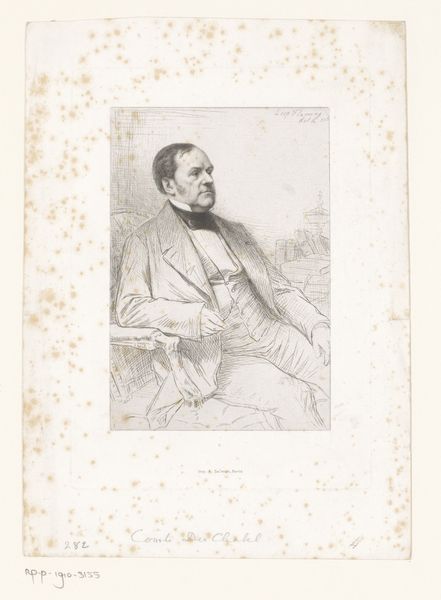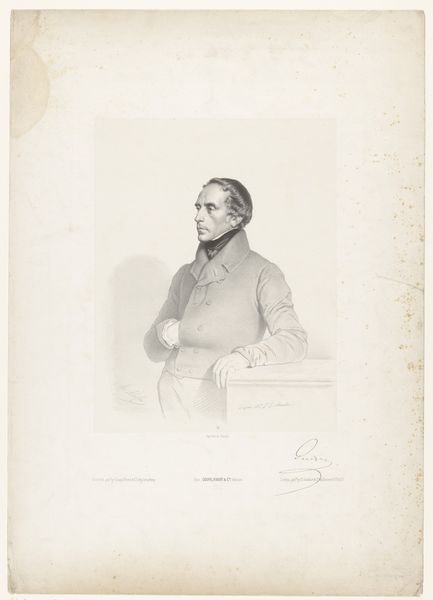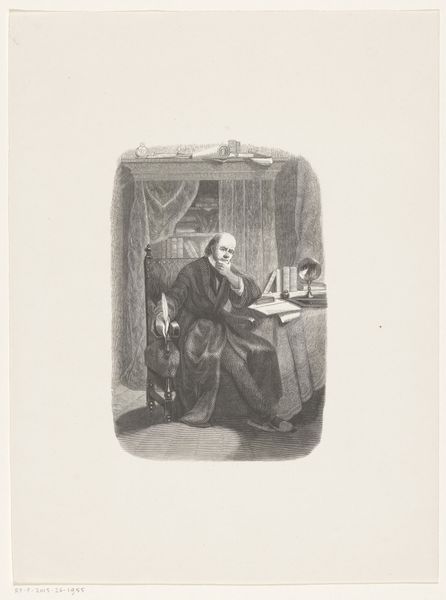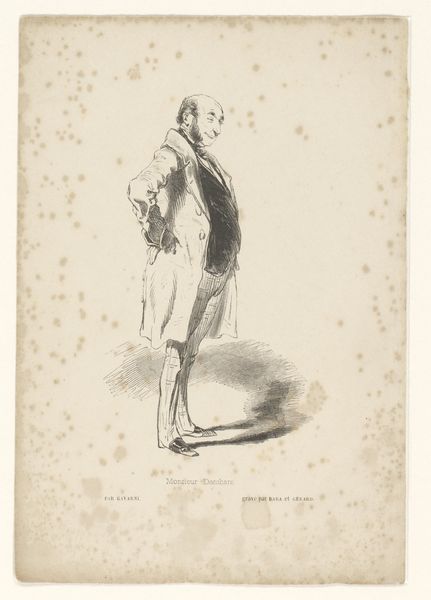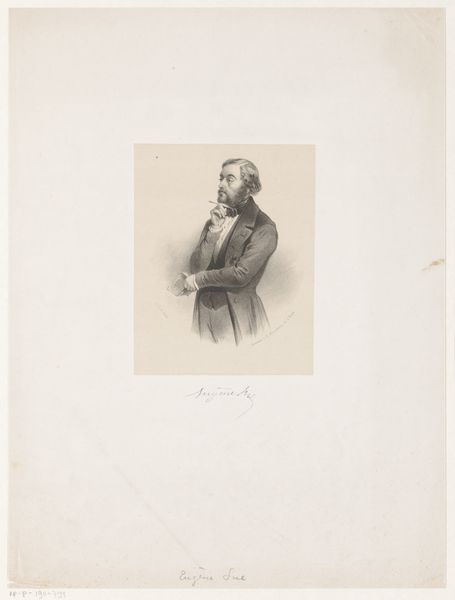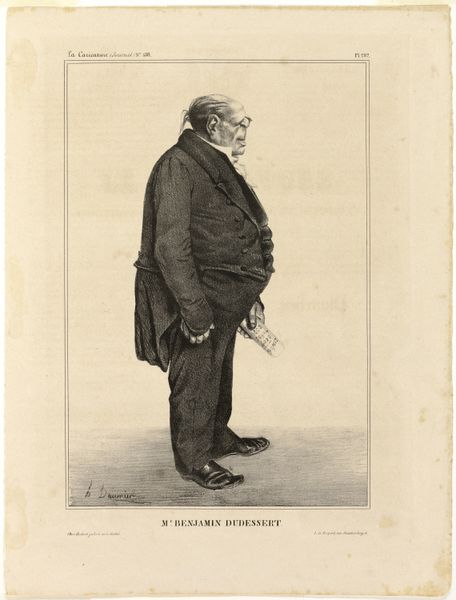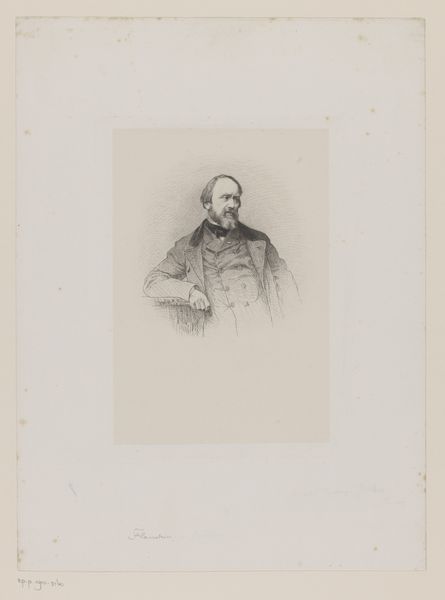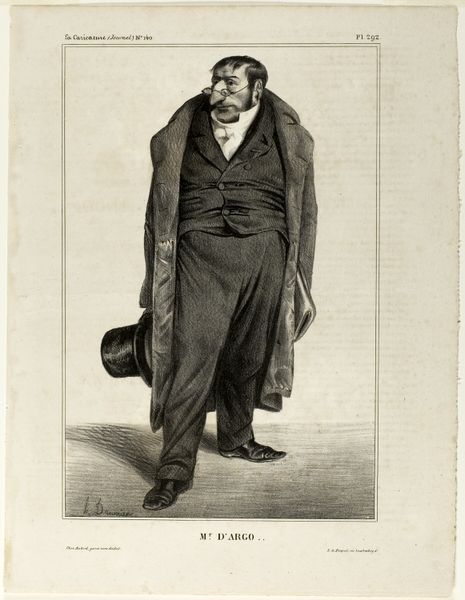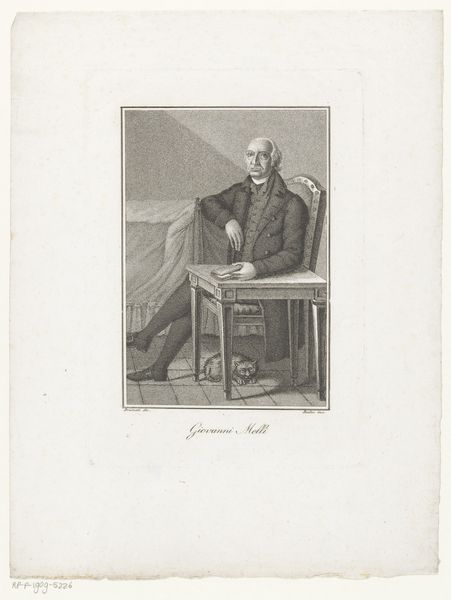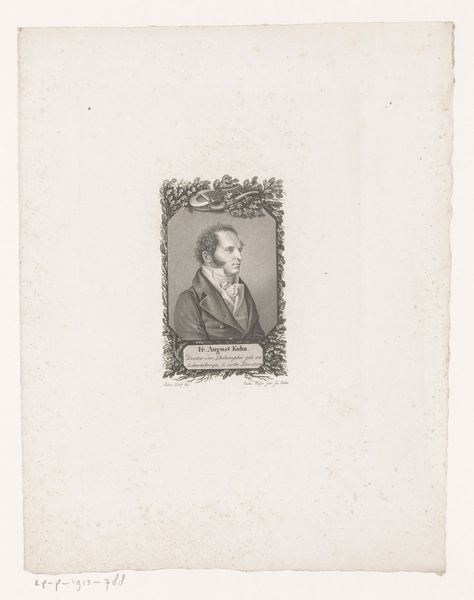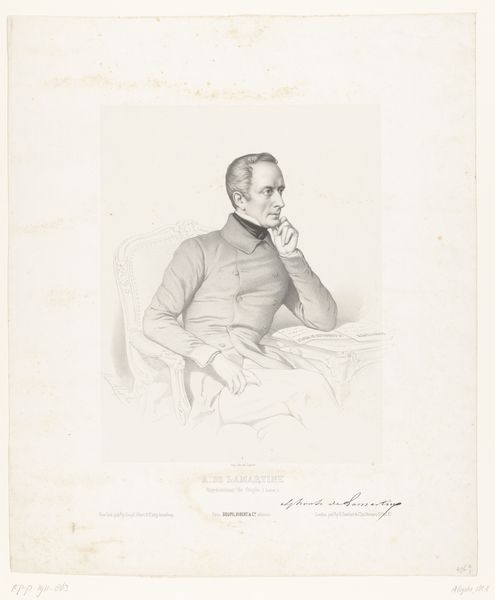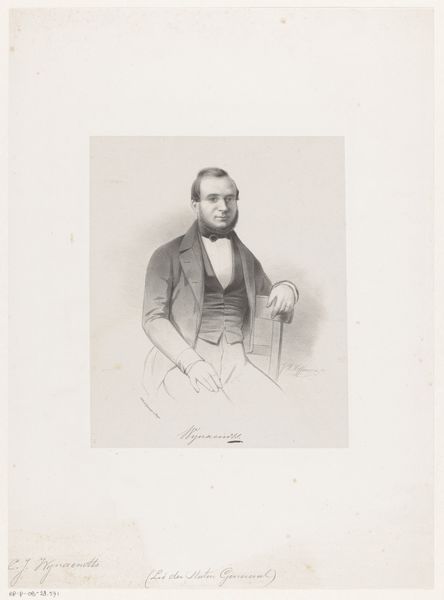
lithograph, print
#
portrait
#
lithograph
# print
#
caricature
#
historical photography
#
romanticism
#
history-painting
Dimensions: height 445 mm, width 300 mm
Copyright: Rijks Museum: Open Domain
Editor: This is "Portret van George Hudson," a lithograph print, possibly from 1845, by John Doyle, currently held at the Rijksmuseum. The man has such a distinct posture and countenance; it almost feels like a jab at someone influential. How would you interpret this work? Curator: Well, first off, I’d like to bring attention to its clever caption, underneath the lithograph, which says "The man wot knows how to get up the steam." This offers crucial insight into the artwork. "George Hudson" was the railroad king of England during the Industrial Revolution; railroads symbolized progress, but also massive wealth and social change, often at a human cost. Editor: So, is this portrait then celebrating him or critiquing his methods? Curator: That’s the brilliance of it. Caricature emerged as a potent force in visualizing—and often critiquing—public figures. Notice the scale of the figure and the details of his facial features. It plays with our perception of power, questioning the romanticized notion of individual genius prevalent in that era. Think about who got to decide how historical events and individuals were remembered, and the power of this seemingly simple, inexpensive medium to counteract it. Editor: That's interesting! It seems the print medium democratized this form of social commentary, making it accessible to a wider audience. It allowed them to take a critical look at the powerful elite. Curator: Exactly! It’s a perfect case study for how social and political forces intertwine to give meaning and agency to even an image like this one. This print reminds us of the fascinating dialogues constantly in play between image-makers, their subjects, and, most importantly, their public. Editor: Thanks, I had no idea a simple image like this held so much socio-political depth!
Comments
No comments
Be the first to comment and join the conversation on the ultimate creative platform.
